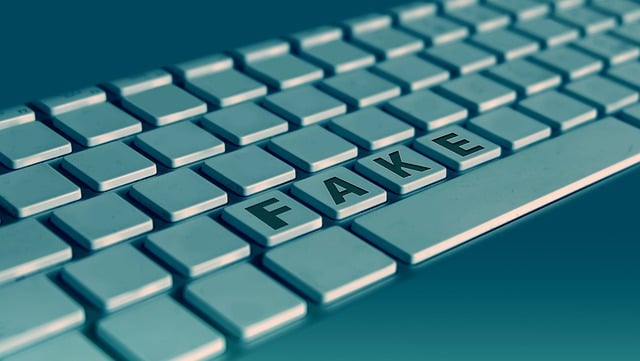Is There a Fake Binance App and How to Protect Yourself
Author: Jameson Richman Expert
Published On: 2025-08-09
Prepared by Jameson Richman and our team of experts with over a decade of experience in cryptocurrency and digital asset analysis. Learn more about us.
With the explosive rise of cryptocurrency trading and Binance establishing itself as one of the world's leading and most trusted crypto exchanges, cybercriminals have increasingly targeted users with malicious schemes. Among the most prevalent threats are fake Binance apps—counterfeit versions meticulously designed to imitate the official platform both visually and functionally. These malicious applications aim to deceive users into downloading compromised software, which can lead to theft of assets, phishing, or further cyberattacks. As awareness about these risks grows within the crypto community, understanding whether a fake Binance app exists, how to identify it, and the best practices to safeguard your assets are more vital than ever. This comprehensive guide delves into the phenomenon of counterfeit Binance applications, the dangers they pose, and effective strategies to protect yourself against such scams.

Understanding the Risks of Fake Cryptocurrency Apps
Fake Binance applications are crafted to convincingly resemble the real platform, often employing sophisticated visual mimicry—such as identical logos, color schemes, icons, and interface elements—to lure unsuspecting users. These clones are typically distributed via unofficial channels, including third-party app stores, malicious websites, emails, or SMS campaigns that direct users to download compromised versions. Unlike legitimate apps, these counterfeit applications may contain embedded malware, spyware, keyloggers, or remote access trojans (RATs) designed to operate silently in the background. Once installed, they can capture login credentials, seed phrases, private keys, or other sensitive data, enabling hackers to gain unauthorized access to user accounts and digital wallets. The consequences can be severe: digital assets drained silently, unauthorized trades executed, or personal information sold on black markets, leading to significant financial losses and emotional distress.
The proliferation of such fraudulent apps correlates strongly with the high value, volatility, and widespread adoption of cryptocurrencies, making users more susceptible to targeted scams. According to recent cybersecurity reports (source: Cybersecurity Magazine), the number of fake crypto apps has surged substantially over the past few years. Cybercriminals increasingly deploy advanced techniques such as deepfake app interfaces, fake reviews, and social engineering to deceive even cautious users. Beyond direct financial theft, these malicious apps can serve as entry points for broader cyberattacks, including ransomware deployment, data breaches, or phishing operations, thereby expanding the threat landscape considerably.
Engaging with counterfeit Binance apps not only risks losing assets but can also compromise personal reputation and privacy—especially if stolen data is exploited for identity theft or extortion. Recognizing these hazards underscores the importance of implementing strict security protocols, maintaining awareness, and practicing cautious online behavior to protect your digital assets and maintain trust within the cryptocurrency ecosystem.
How to Identify a Fake Binance App
Distinguishing the authentic Binance app from counterfeit versions requires a combination of vigilance, technical verification, and understanding common deception tactics. Here are detailed strategies to help you identify fake applications:
- Source Verification: Always download the Binance app exclusively from official app stores—Google Play Store for Android or Apple App Store for iOS. Confirm the developer’s name—look for “Binance Limited” or verified developer badges. Avoid sideloading APK files from unofficial websites, third-party app stores, or links received via email or messaging, as these are common vectors for malicious copies.
- App Store Details and User Feedback: Examine the app's ratings, number of downloads, and user reviews. Fake apps often display suspiciously low ratings, recent negative reviews, or a sudden influx of unverified user accounts. Check if the developer responds to reviews or provides official contact information, which can be indicative of authenticity.
- Visual and Functional Consistency: Authentic Binance apps maintain high-quality design, consistent branding, and fully functional features aligned with the official website. Be cautious of missing features, unusual permissions requesting access to unrelated data, or UI discrepancies—common signs of counterfeit versions. Cross-reference features with the official Binance website or trusted tutorials.
- Website and URL Verification: Access Binance through their official web portal at https://www.binance.com/. Ensure the page is secured via HTTPS with a valid SSL certificate—look for the padlock icon in the address bar. Verify that URLs are correctly spelled and not appended with strange characters or subdomains that don’t belong to Binance. Avoid clicking on links in suspicious emails or messages unless verified.
- Security Features and Permissions: The genuine Binance app supports robust security measures—two-factor authentication (2FA), biometric logins, device management, and anti-phishing codes. Fake apps may request excessive permissions, such as access to contacts, SMS, or device administrators, which are unnecessary for legitimate trading apps and should raise red flags.
- Use Antivirus and Security Tools: Before installation, scan any downloaded APK or app files with reputable antivirus or anti-malware software. Many security tools can detect malicious code or suspicious behaviors embedded within fake apps, providing an additional layer of protection.
Additional Security Tips to Protect Your Binance Account
Beyond verifying app authenticity, adopting comprehensive security practices is essential for safeguarding your assets. Implement these best practices diligently:
- Keep Software Up-to-Date: Regularly update your Binance app, mobile operating system, and security software. Updates often patch vulnerabilities exploited by cybercriminals, reducing the risk of infection from malicious apps or phishing sites.
- Create and Manage Strong, Unique Passwords: Use complex passwords generated through reputable password managers, and avoid reusing passwords across multiple accounts. Consider enabling password generators to maintain high entropy in your login credentials.
- Activate Multi-Factor Authentication (MFA): Enable MFA via authenticator apps such as Google Authenticator or hardware security keys like YubiKey. MFA adds a critical security layer, preventing unauthorized access even if login credentials are compromised.
- Secure Your Devices: Use device encryption, enable screen lock, and avoid jailbreaking or rooting your device—these actions can introduce exploitable vulnerabilities.
- Be Wary of Phishing and Social Engineering: Always verify the authenticity of emails, messages, or links claiming to be from Binance. Never share private keys, seed phrases, or login credentials via email or messaging channels. Always access Binance through verified URLs.
- Use Hardware Wallets for Long-Term Storage: Store large holdings offline on hardware wallets like Ledger or Trezor, which keep private keys isolated from online threats, significantly reducing the risk of remote hacking.
- Regularly Monitor Account Activity: Check your Binance account logs periodically for unfamiliar transactions or login locations. Enable alerts for deposits, withdrawals, or account changes where possible.

Official Binance Links, Referral Programs, and Verification Resources
To ensure secure interactions, always use verified links and official channels when accessing Binance. Register through the official website or trusted referral links. For example, the official Binance registration link is: https://accounts.binance.info/en/register?ref=12093552. Using official links not only helps avoid scams but can also grant you referral bonuses and access to official support channels.
Additionally, consider exploring reputable alternative exchanges with strong security reputations such as:
> These platforms are verified, often feature their own security protocols, and support active community engagement, helping you trade securely in the volatile crypto environment.How to Report Fake Binance Apps and Help Protect the Community
If you encounter a suspicious or counterfeit Binance app, act promptly to minimize risk and assist community safety efforts. Report the malicious app directly to Binance through their official support portal or security channels. Provide comprehensive information—screenshots, app descriptions, URLs, and device details—to facilitate swift investigation and removal. Additionally, submit reports to app store moderators such as Google Play or Apple App Store so they can review and potentially remove malicious software. Sharing your experience on community forums, social media, or cybersecurity platforms helps alert others and prevents further victimization. Collective vigilance is essential to combat cybercrime effectively in the rapidly evolving crypto landscape.
Conclusion
In summary, the existence of fake Binance apps poses tangible threats—ranging from financial theft to identity compromise. Recognizing counterfeit applications requires attention to source verification, visual cues, permissions, and app behaviors. Always prioritize downloading apps from official app stores, enable multi-layered security like MFA, and stay vigilant against phishing tactics. By adopting comprehensive security practices, staying informed about scams, and actively reporting suspicious activities, you greatly enhance your protection in the dynamic realm of cryptocurrency trading. Remember: cybersecurity is an ongoing process—remaining cautious and proactive ensures your digital assets and personal data stay secure amid constantly evolving threats.